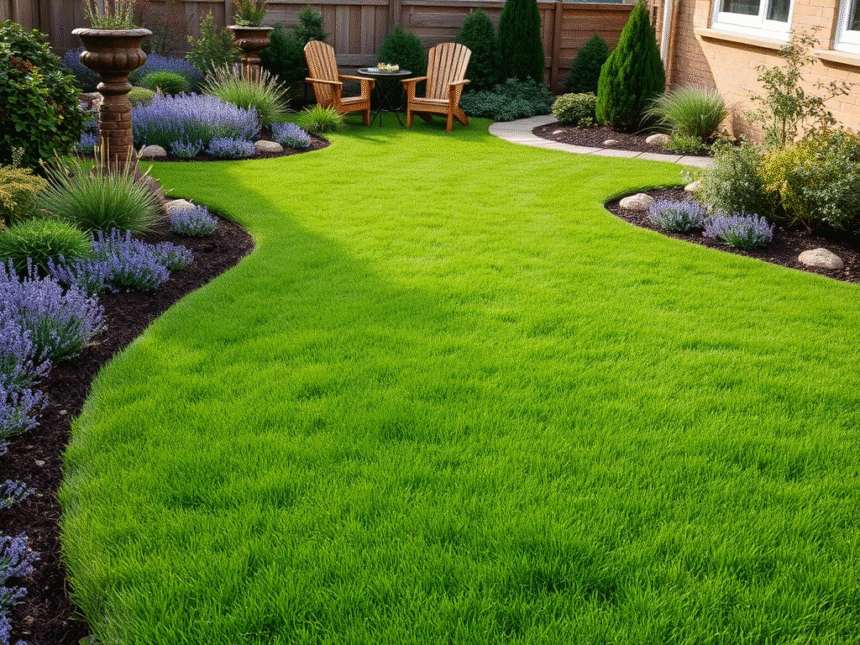When people visit your home or even walk by it, one of the first things that they will notice is the garden. To make an excellent first impression and boost the home’s curb appeal, having a fantastic-looking lawn and garden is a preferred option for many homeowners. With some patience and a little effort, you can create the perfect lawn for your home that is also low maintenance. However, there is much more to achieving a beautiful-looking lawn than sowing grass seed and waiting for it to grow. You can find some tips below to help you grow a fantastic-looking lawn for your home that won’t require a significant amount of your free time to maintain.
When To Seed Your Lawn
Whether you are planting a new lawn or want to fill in empty patches in an existing lawn, you must plant your grass seeds at the correct time of year. To try and ensure that all the seeds you sow germinate, you will need to sow your grass seed in either mid-spring or early autumn. At this time of year, there is plenty of moisture available to help the seed germinate, and the temperature is not too hot. Gemination takes between seven and ten days, after which you can start to see the first shoots growing. If you have a choice of when to sow your grass seed, early autumn is the best option, as it allows the seeds to establish before the frost comes, and establish their roots quickly. Planting in spring often takes longer for roots to develop.
Choosing The Best Seed Mix
You also want to ensure that you choose the correct seed mix before sowing the seeds on your lawn. There are many different types of grass seeds you can use, such as:
- Red Fescues
- Perennial Ryegrass
- Chewings Fescue
- Tall Fescue
- Meadow Grass
- Common Bent
You must conduct some research to help you select the best seed for your lawn and choose one that matches the weather conditions in your area. In dryer climates, you want a seed that is suitable for those conditions, and likewise, if you are in an area prone to lots of rain. Matching the best grass seed to the climate conditions of your location will help ensure you grow a green and lush lawn that will be the envy of your neighbourhood.
Preparing To Sow Your Seeds
Once you have chosen the best type of seed for your lawn, you will need to prepare the area before you sow it. The first task is to remove all the weeds from the area where you are sowing your grass seeds. Once that is complete, if the soil is hard and compacted, you will want to rotovate it to a depth of about 20cm. However, if your soil is light and fast draining, it is a good idea to add plenty of compost or manure to it. You will want to leave the soil for at least a couple of days to settle, preferably a couple of weeks.
Sowing Your Seeds
If needed, you can weed the area again and then firm the soil by walking on it in different directions. You will then need to use a rake to break up clumps of earth and remove any large stones. Additionally, you can add some fertiliser. You can now start sowing your lawn using your preferred grass seed. You can walk lengthwise along your lawn, scattering the seeds evenly, and when complete, walk the lawn widthways, doing the same. Give your lawn a light watering, being careful not to dislodge the seeds, and then cover with a horticultural fleece to protect the seeds from birds and other animals.
Water your lawn every few days, and with some patience, your lush, green new lawn will develop into a fantastic addition to your home.


